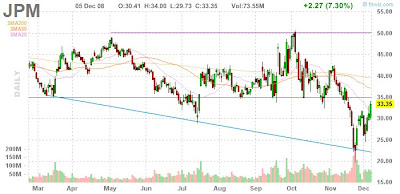Due to an overwhelming request of questions about Day Trader Status I have decided to write this newsletter to look at these issues. Whether you know about it or not, you don't want to accidentally learn about Day Trader Status by a notice from your brokerage firm saying that you are now tagged as a Day Trader!
WHAT IS A DAY TRADER?
A Day Trader is someone who does four intra-day trades in five consecutive trading days. Let me address some terms here to help you understand this better:
Intra-day trade: A trade that is opened and closed in the same trading day (round trip).
Five Consecutive Trading Days: These are calendar days that the market is open, all in a row. For example:
If the market was open on Monday through Friday that would be five consecutive days.
Then we would have Tuesday through Monday for the next five consecutive days (unless Monday was a holiday in which case it would then be Tuesday through Tuesday.
Next, we would have Wednesday through Tuesday, and so on. The key is five trading days in a row.
HOW TO AVOID IT
One of my favorite students, Debi D, taught me to use a calendar to record my intra-day trades. By placing an "X" on the day
you do intra-day trades, (2 X's if you do two, 3 X's if you do 3 in that day) you can avoid accidentally getting to four by
looking at your calendar. Make sure you mark the days the market is closed on your calendar.
WHY DOES IT MATTER?
I thought it mattered a lot, but after my research for this newsletter, it appears there actually are some great benefits
being classified as a "Day Trader" if the $25,000 is not an issue for you. Basically there are two issues at hand:
ISSUE ONE: Your brokerage firm will likely impose the NASD requirements of maintaining at least $25,000 in your trading
account - and you have 5 days to comply. If you have this kind of money there is no issue! However, if you are starting out
with limited funds to trade it could be a big issue! One important note - always ask for one time of forgiveness! Many
students told me they did and the status was removed - so ASK! There may be a way around it, but I am not sure. From my
reading of the requirements, the penalty for not complying is that you are subject to cash only trades, (which are what we
were doing anyway with options)!
There is a really incredible benefit though if you are tagged a Day Trader and maintain the $25,000 minimum value in
your account. You may be eligible for day-trading margin, which is 4 times account buying power. WOW DO I EVER LIKE THIS
ONE!! This buying power may only be used intra-day and may not be held past market close. Orders exceeding Day-Trading Buying
Power will be rejected.
ISSUE TWO: Tax Consequences with the IRS
Actually upon my research into the IRS Publications it does not appear as bad as I thought. A tax firm specializing in trading activity, says:
o They allow a full deduction of all trading losses in the year they occur, thereby circumventing the historical $3,000 net capital loss rule.
o They allow full current expensing of trading expenses without limitation, thereby circumventing the limitation on miscellaneous itemized deductions.
o They enable the active trader to still take advantage of the beneficial long term capital gain rules.
o They enable the active trader to circumvent the restrictive "Wash Sale" rules normally applied to investors, thereby alleviating a huge record-keeping nightmare.
o They allow the active trader to deduct losses on open as well as closed positions.
Continuing on with my IRS research:
You would report your trader's activity as a business on Schedule C of your 1040, possibly allowing all the deductions for your classes and tools, versus a limitation on deduction for passive trading that would have had to be reported on your
Schedule A with a 2% AGI limitation deduction. But here is the sweet deal: you can still elect to report your gain or loss on
Schedule D as a capital gain unless you made the mark-to-market election, (which has you claim the income as ordinary income on Form 4797 instead of Schedule D - see IRS Publication 550 for more information on this). Just to be safe, you better talk to an accountant that specializes in stock market trading. Being a retired accountant, I want to tell you that most accountants will not know how to treat your trading income properly - you need to understand this.
The proper classification of your investment activities is important to determine how income and expenses are to be reported.
Traders that buy and sell securities frequently can report their purchases and sales result in capital gain and loss, and their deductible expenses are trade or business expenses.
Happy Trading!
Darlene Powell with Better Trades




